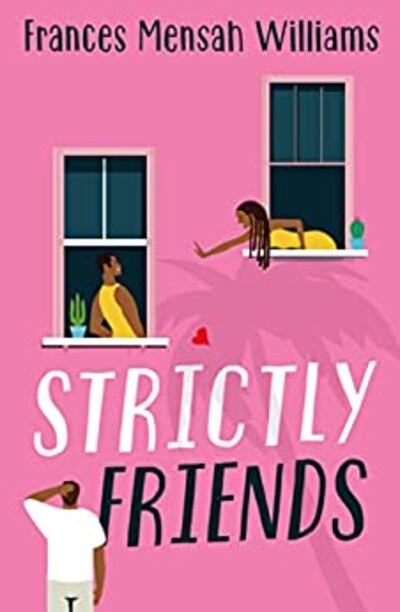I start with a confession: I binge watched Bridgerton, devouring the first season, then pouncing voraciously on to the second.
For the uninitiated, Bridgerton is a romantic British Regency-era series screened on Netflix. Set in London, the series centres on the aristocracy and landed gentry and features the powerful Bridgerton family of eight siblings who navigate rivalries and controversy in pursuit of advantageous marital alliances. Against this backdrop of high society and over the course of a social season, love blooms and scandals flourish.
Bridgerton was an instant hit, and the most-watched original series launched on Netflix at the time of its premiere. In 2022, the second series debuted at number one in an astonishing 92 countries, the highest opening at that time for any English-language Netflix series.
At this point, I must also confess that what drew me to the show was not the machinations of the Bridgertons and their ilk, but rather the casting. In season one, the male love interest, the Duke of Hastings, was not only tall and handsome; he was also Black. Another leading character, the imperious Lady Danbury, was portrayed by Black British actress, Adjoa Andoh. The colour-blind casting trend continued in season two with both leading ladies, Viscount Bridgerton’s principal love interests, played by actresses of Asian heritage. Instead of a bland Regency romance series, the show’s Black and Brown lead characters presented a colourful, visually exciting, multicultural feast.
READ MORE
The programme’s cultural diversity also made commercial sense for a global audience. Stunningly, for a British period drama, one-third of Bridgerton’s viewers in the USA were Hispanic or African American and evenly split across age ranges, according to Nielsen Media Research which characterised the show’s audience as ‘diverse and broad’.
With film and television now reaping the commercial rewards of diversity in romance, as a Black British romance writer, I question why we don’t we see the same shift when it comes to romantic fiction?
British rom-com novels have long been the preserve of non-Black authors, but the success of Bridgerton tells us that there’s also room for romance stories about women who aren’t Bridget Jones. While the US has seen an explosion in romance novels by Black authors – many successfully self-publishing – the British publishing industry has largely been slow to invest in popular literature by Black writers.

Perhaps the answer can be found in a 2020 survey of the UK publishing industry. Rethinking ‘Diversity’ in Publishing was the first in-depth UK academic study of diversity in the industry. A key finding was the assumption about audiences. The core audience for publishers is white and middle-class, and the industry essentially caters to this group. The report pointed out that across the acquisition process, ‘publishers fear that books by writers of colour are too niche and will not appeal to their core audience.’ The report also quotes one of the findings from a previous report (Writing the Future report (Spread the Word, 2015)) that writers from minority backgrounds feel steered into reproducing racial and ethnic stereotypes. Less rom-com and more ‘immigrant narrative’ stories which are supposedly more authentic to us.
However, Bridgerton’s success shows that increasing representation also increases audiences. Black characters don’t need to be confined to side roles like the ‘sassy best friend’; they can be the star. When I meet my readers, women of colour will often tell me how refreshing and affirming it feels for the central character to be a woman who looks like them and who shares the same cultural touchstones.
When I started writing novels, it seemed publishers, with very few exceptions, wanted books with Black characters to be non-fiction, literary, or steeped in trauma or gang violence. Conversely, I wanted to write contemporary romantic comedies about women who look like me. I was interested in stories about girls dealing with dodgy boyfriends, and even dodgier bosses; about women navigating interfering relatives, career hiccups and clashing cultures. My first novel, From Pasta to Pigfoot, about pasta-loving Faye, a Black British ‘girl next door’ in search of love and her Ghanaian roots, celebrated the humorous and sometimes chaotic impact of culture clash. Readers loved it, and it was selected as one of the Top 25 Summer Reads by WH Smith.
Drawing on my own bi-cultural background, several of my books are set in Ghana, offering an insight into people of different cultures experiencing the same struggles with life and love. In my seventh novel, Strictly Friends, Ruby, a Black Londoner, takes a trip to a Caribbean island with her young son in a bid to stop his improbable fantasies about his errant father. The journey leaves Ruby confronting the truth and facing a choice she could never have imagined.
There is undoubtebly a thirst for more books with protagonists who represent the breadth of cultures in Britain. Rom-com heroines don’t always need to be white like Bridget Jones to be relatable. There’s space for fully rounded Black and multiracial characters who are equally focused on finding love and happiness and who get to navigate the mundane, the extraordinary, the painful and the hilarious, just like their white counterparts. Literature presents us with new perspectives on the familiar, and ‘mainstreaming’ different cultures by showcasing them through familiar tropes reveals how much more connects than differentiates us.
The UK publishing industry concedes it has a problem with diversity, and I urge British publishers to challenge their assumptions about writers – and readers – of colour and do more to champion writers like me. Hiring more Black commissioning editors, engaging with all communities, and seeing romantic fiction by Black authors as more than just stories for a Black audience will addressing the unspoken question of ‘How do we sell this?’
Here’s hoping that the stellar commercial success of a show like Bridgerton influences the British literary world and helps to bring more colour to the genre of romantic fiction.
Frances Mensah Williams’ latest novel Strictly Friends was published in March.














